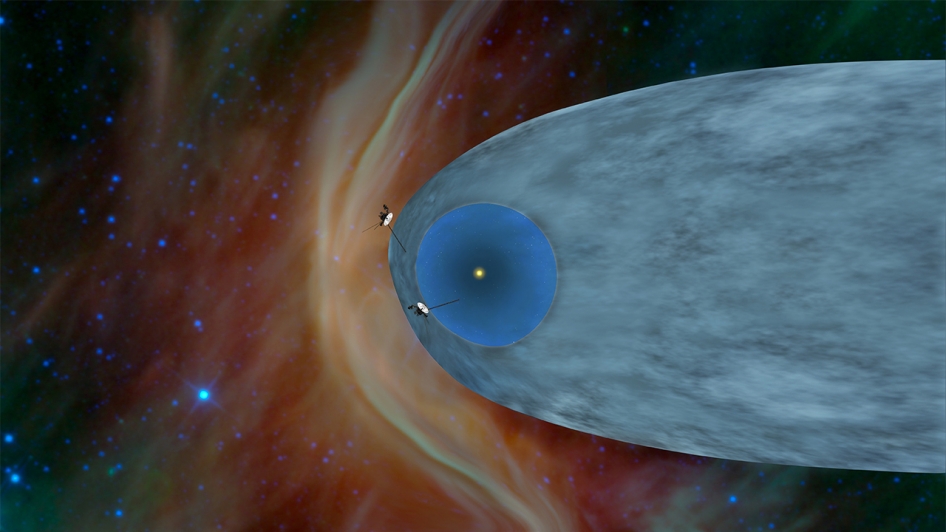NASA's nearly four-decade-old Voyager 1 spacecraft has embarked on an "historic leap" into interstellar space, making it the first man-made object to leave the solar system.
Voyager team members monitoring the probe suspected last year that it might have reached the milestone, but did not have confirmation until they analyzed data to confirm Voyager's position -- about 12 billion miles from the sun. Voyager left Earth -- nearly 93 million miles from the sun -- in 1977 and still sends back signals to scientists, who continue to marvel at the probe's durability.
"Voyager has boldly gone where no probe has gone before, marking one of the most significant technological achievements in the annals of the history of science, and adding a new chapter in human scientific dreams and endeavors," said John Grunsfeld, NASA's associate administrator for science in Washington.
The Fiat 500-sized probe has entered a transitional region outside the solar system where some effects from the sun remain evident. Researchers used data gleaned from a coronal mass ejection -- a powerful burst of solar wind and magnetic fields from the sun -- in March 2012 to locate Voyager.
When energy from the burst arrived at Voyager 1's location about a year later, it caused vibrations around the spacecraft. Voyager 1's instruments detected the vibrations, which allowed scientists to determine that the density of plasma surrounding the spacecraft was consistent with what they expected in interstellar space.
"We literally jumped out of our seats when we saw these oscillations in our data -- they showed us the spacecraft was in an entirely new region, comparable to what was expected in interstellar space, and totally different than in the solar bubble," said Don Gurnett, a team member based at the University of Iowa. "Clearly we had passed through the heliopause, which is the long-hypothesized boundary between the solar plasma and the interstellar plasma."
Team members generally accept Aug. 25, 2012 as the date Voyager 1 arrived in the space between stars.
The Voyager spacecrafts continue to impress with their longevity. Voyager 1 and Voyager 2 were launched in 1977, passing Jupiter and Saturn.
Voyager 2, launched 16 days before its twin, went on to Uranus and Neptune and is the longest continuously operated spacecraft. Scientists said they are not certain when it, too, will cross into interstellar space. 
Both probes still send back low-watt signals. A signal from Voyager 1 takes about 17 hours to travel to Earth via NASA's Deep Space Network stations.
The artist's concept, at right, shows general locations of the two Voyagers. Voyager 1 can be seen above Voyager 2, just beyond the blue solar bubble in interstellar space.
Voyager 1 will now study exotic particles in the never-before-explored part of the universe. The probe also carries a gold-plated disc containing multicultural greetings, songs and photos -- useful in the event it encounters intelligent life.
"The team’s hard work to build durable spacecraft and carefully manage the Voyager spacecraft's limited resources paid off in another first for NASA and humanity," said Suzanne Dodd, Voyager project manager at NASA's Jet Propulsion Laboratory. "We expect the fields and particles science instruments on Voyager will continue to send back data through at least 2020. We can't wait to see what the Voyager instruments show us next about deep space.
More Southern California Stories:
- Arrests in Long Beach Cold-Case Slayings
- Rap Mogul Marion "Suge" Knight Arrested
- Help Sought to Find Woman's Killer
- Walk of Fame Star for Crooner Barry White
- Laundry Business Crash Rips Engine From Car
- Principal Admits to Changing Students' Grades
- Motorcyclist Killed in Crash on 60 Freeway
- Castaic Burned Body ID'd; 3 Arrested
Photo Credit: NASA/JPL-Caltech